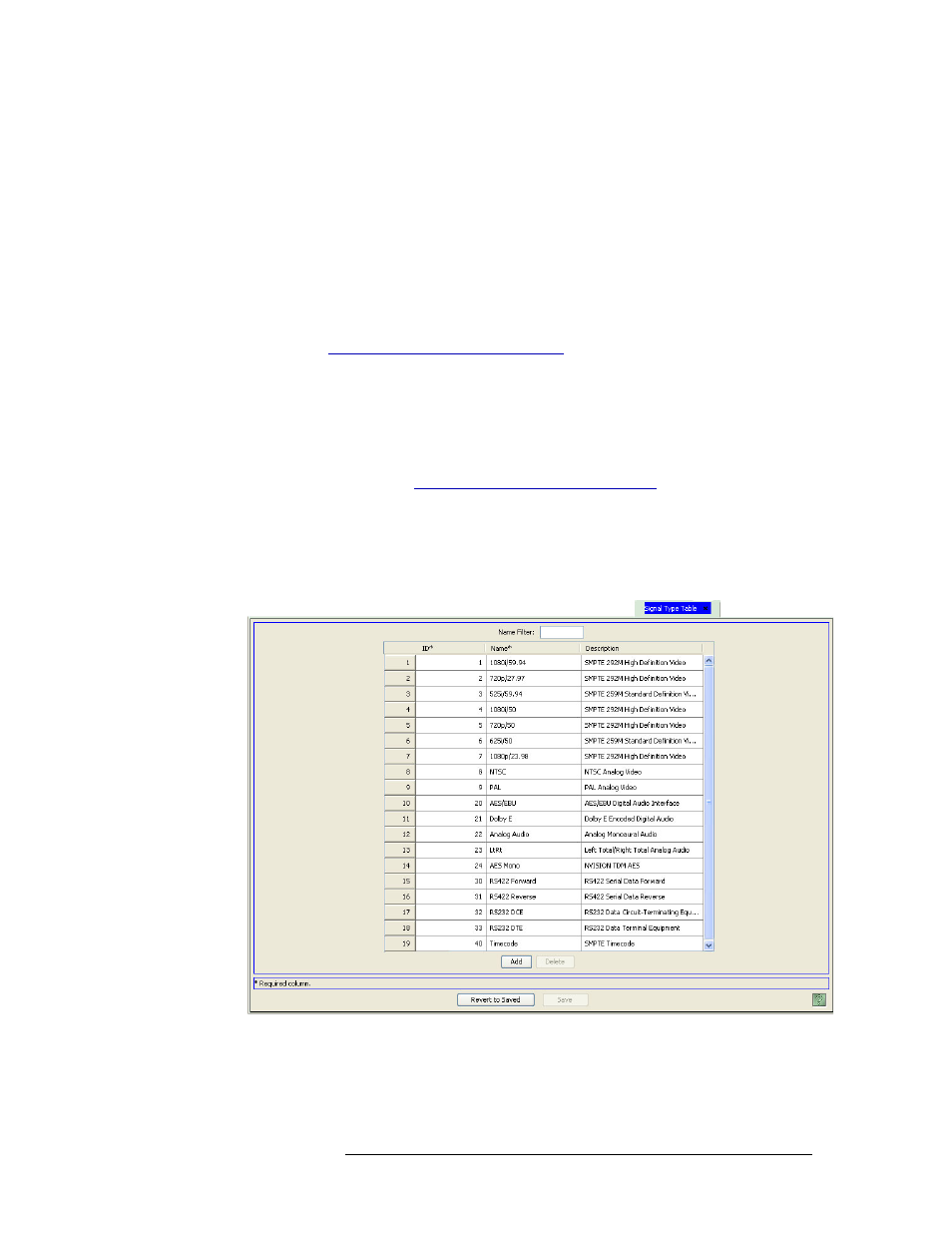Adding or binding signals, How to add a signal type, Level sets – Grass Valley NV9000-SE v.3.0 User Manual
Page 169

NV9000-SE Utilities • User’s Guide
149
8. Level Sets
Managing Signal Types and Signal Binding
Adding or Binding Signals
Signals can be added or “bound” to a virtual level at any time. When binding a signal to a virtual
level, that signal is always associated with that virtual level until changed. Whenever that virtual
level is added to a level set, the bound signal type will also be added. One virtual level may be
bound to several signal types. Binding signals to virtual levels is an added security feature by
ensuring that the right signal type is selected when creating level sets and associating a device with
that level set.
Once changes are saved, there is no “undo” function; the configuration is permanently altered. To
implement configuration changes, the configuration must be written to the system controller. For
instructions, see
Implementing Configuration Changes
Signal types are added using the ‘Signal Type’ table accessed through the ‘Views’ pane. Signals are
bound to levels using the ‘Virtual Level Signal Binding’ table, also access through the ‘Views’
pane.
How to Add a Signal Type
1 Launch NV9000-SE. (See
Launching and Exiting the Application
2 From the Navigation area, select the ‘Views’ pane and then ‘Signal Types’. The ‘Signal Types’
table appears, as shown in Figure 8-32.
To narrow the list of signals that display, enter the first characters of a signal type in the ‘Name
Filer’ field. The list is automatically reduced to display only signal types matching that charac-
ter string.
Figure 8-32. Signal Types Table
3 Click
Add
. A blank row is added to the bottom of the list.
